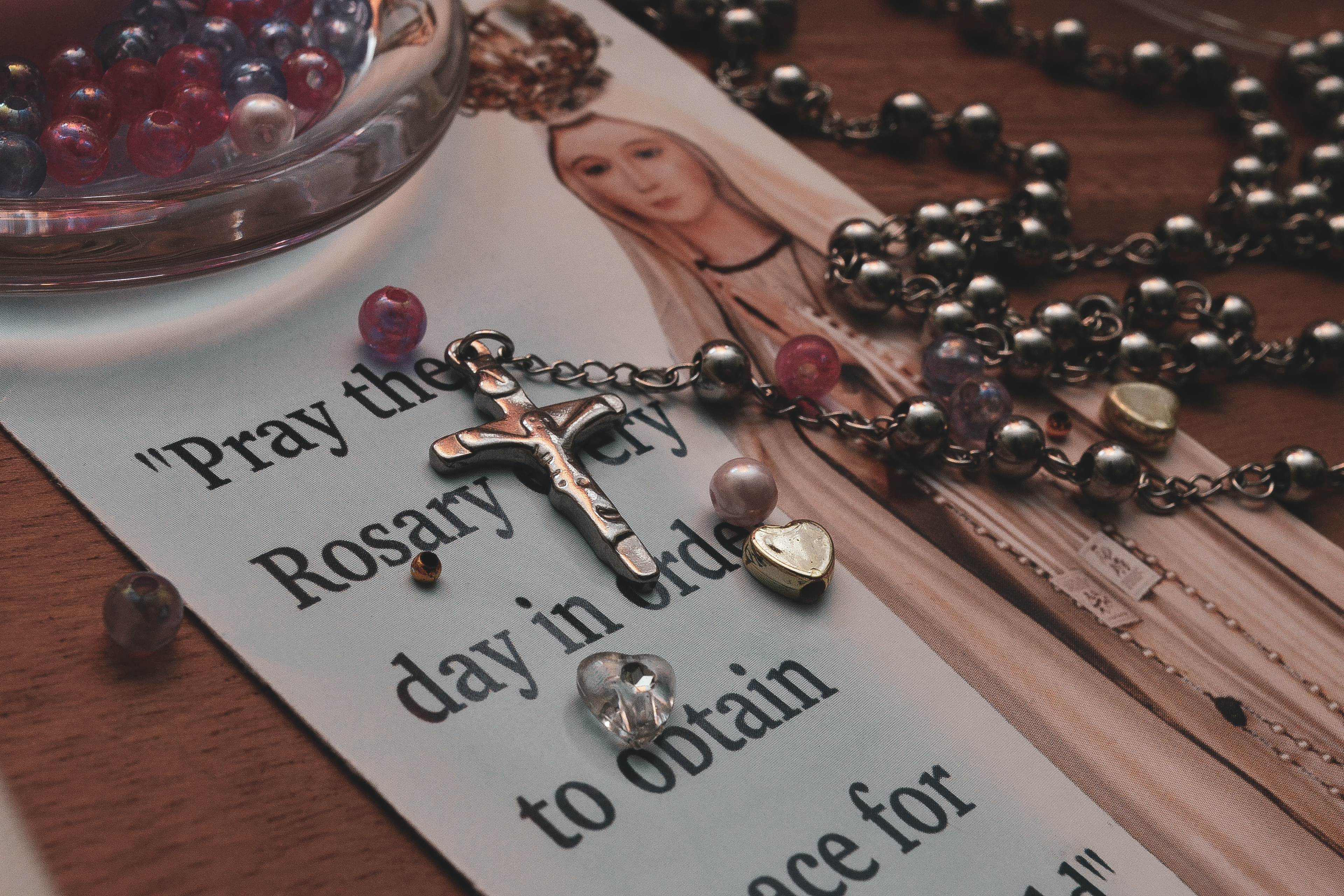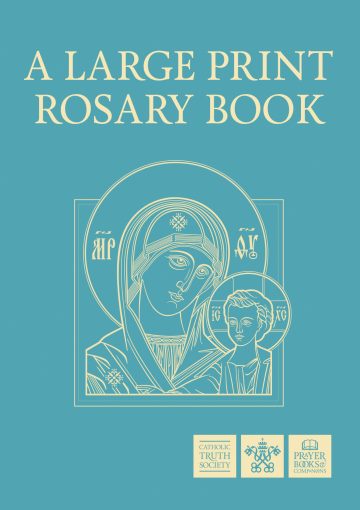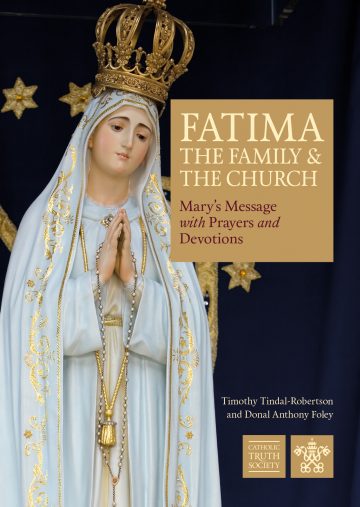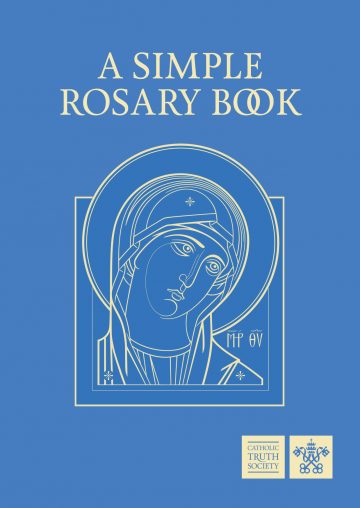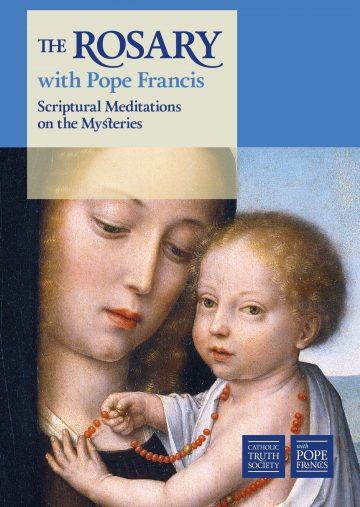The power of the Rosary comes from the fact that it is a meditation on the Scriptures with Mary, since the Our Father is Jesus’s own prayer given to his disciples when they had asked him how they should pray (Mt 6:9-13), and the first part of the Hail Mary is also Scriptural, being a compilation of part of the dialogue between Mary and the angel Gabriel at the Annunciation (Lk 1:28), combined with the exclamation made by Elizabeth during the Visitation (Lk 1:42).
The word Rosary means a crown of roses, that is, it is a spiritual bouquet given to the Blessed Virgin by those who pray to her.
Dominicans
According to tradition, St Dominic, the founder of the Order of Preachers or Dominicans, (1170-1221), preached a form of the Rosary in France at the time that the Albigensian heresy was devastating the Faith there. Tradition also has it that the Blessed Virgin herself appeared to him and asked for the practice of praying the Rosary as an antidote for heresy and sin, and certainly this traditional view has been accepted by a number of Popes over the centuries.
As time went on, the Dominican Alain de Roche began to establish Rosary Confraternities to promote the praying of the Rosary. The form of the Rosary we have today is believed to date from his time, that is, the fifteenth century. In succeeding centuries, saints and Popes have highly recommended the Rosary as being the greatest prayer in the Church after the Mass and Liturgy of the Hours.
The Mysteries of the Rosary were divided into three groups of fifties dedicated to the Joyful, Sorrowful and Glorious mysteries, and these fifteen mysteries were officially established by Pope Pius V in 1569.
There have been a number of important historical incidents in which the praying of the Rosary has played a vital part in bringing about success, and in particular the Battle of Lepanto. Pope Pius V called for Catholics to pray the Rosary for victory, and the Holy League fleet decisively defeated Ottoman naval forces at Lepanto in the eastern Mediterranean, thus preventing the invasion of Europe. Before the battle, the Rosary was recited by the Christian sailors, and after five hours of fighting they triumphed. Out of this victory came the Feast of the Holy Rosary, which is celebrated each year on 7 October.
The various Marian apparitions which took place during the nineteenth century, and particularly in France, did a great deal to revive Catholicism in Europe, with the apparitions at Lourdes – where Our Lady appeared holding a rosary on her arm – being the most prominent in this process.
The Popes
The power of the Rosary has been recognised by many recent Popes, and particularly by Pope Leo XIII (1878-1903), who did much to promote it. He was greatly aware of the dangerous way in which nineteenth century society was developing, and he saw that the best way to counteract this was to get the Catholic faithful to pray the Rosary. To this end he issued a record eleven encyclicals on it.
And more recently, in 1955, the power of the Rosary was dramatically shown when the Soviet Army voluntarily left Eastern Austria, which they had occupied after the Second World War. Fr Petrus Pavlicek, a Franciscan, organised a Rosary Crusade from 1946 onwards, which eventually had ten percent of the population of 7 million, that is, 700,000 Austrians, praying five decades of the Rosary daily for peace in the country. He also organised candlelit processions in Vienna with a pilgrim Virgin statue of Our Lady from Fatima. The result was that on 13th May 1955, it was announced that the Soviets were willing to withdraw from Austria and sign a peace treaty.
Pope Pius XII (1939-1958) was insistent, too, about the power and importance of the Rosary, as was his successor, St Pope John XXIII, who was particularly devoted to the Rosary, and said all fifteen mysteries daily. Pope Paul VI, too, was aware of the power of the Rosary, and recommended it very strongly in his Apostolic Exhortation, Marialis Cultus.
St Pope John Paul II, with his great devotion to Our Lady, was also very keen to promote the Rosary, and issued his own Apostolic Letter on it, Rosarium Virginis Mariae, in 2002. He also proclaimed the year from October 2002 to October 2003 the “Year of the Rosary”, and instituted the new “Mysteries of Light”.
Pope Benedict XVI, too, and Pope Francis, have also shown strong support for the Rosary. So it retains its power, and for the last one hundred and fifty years, the Popes have been urging the faithful to pray the Rosary, echoing the appeal of Our Lady of Fatima at each of her six apparitions in 1917, that we should pray the Rosary daily to bring peace to the world. She also described herself as the “Lady of the Rosary” at Fatima, thus underlining its importance for the Church and the world.
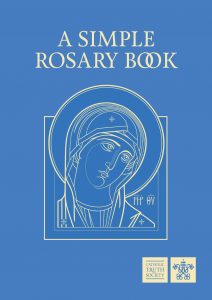 This blog is extracted from A Simple Rosary Book. Designed for those familiar with the prayer as well as for newcomers, this text clearly explains how to pray the Rosary. Prayers and Scripture passages associated with the Rosary are also included.
This blog is extracted from A Simple Rosary Book. Designed for those familiar with the prayer as well as for newcomers, this text clearly explains how to pray the Rosary. Prayers and Scripture passages associated with the Rosary are also included.
Order A Simple Rosary Book to support the mission of CTS, and to understand the rosary better, including how to pray it.
